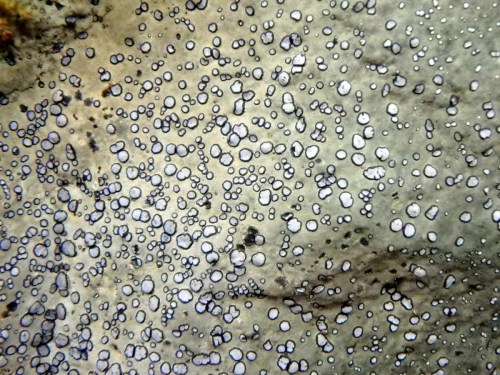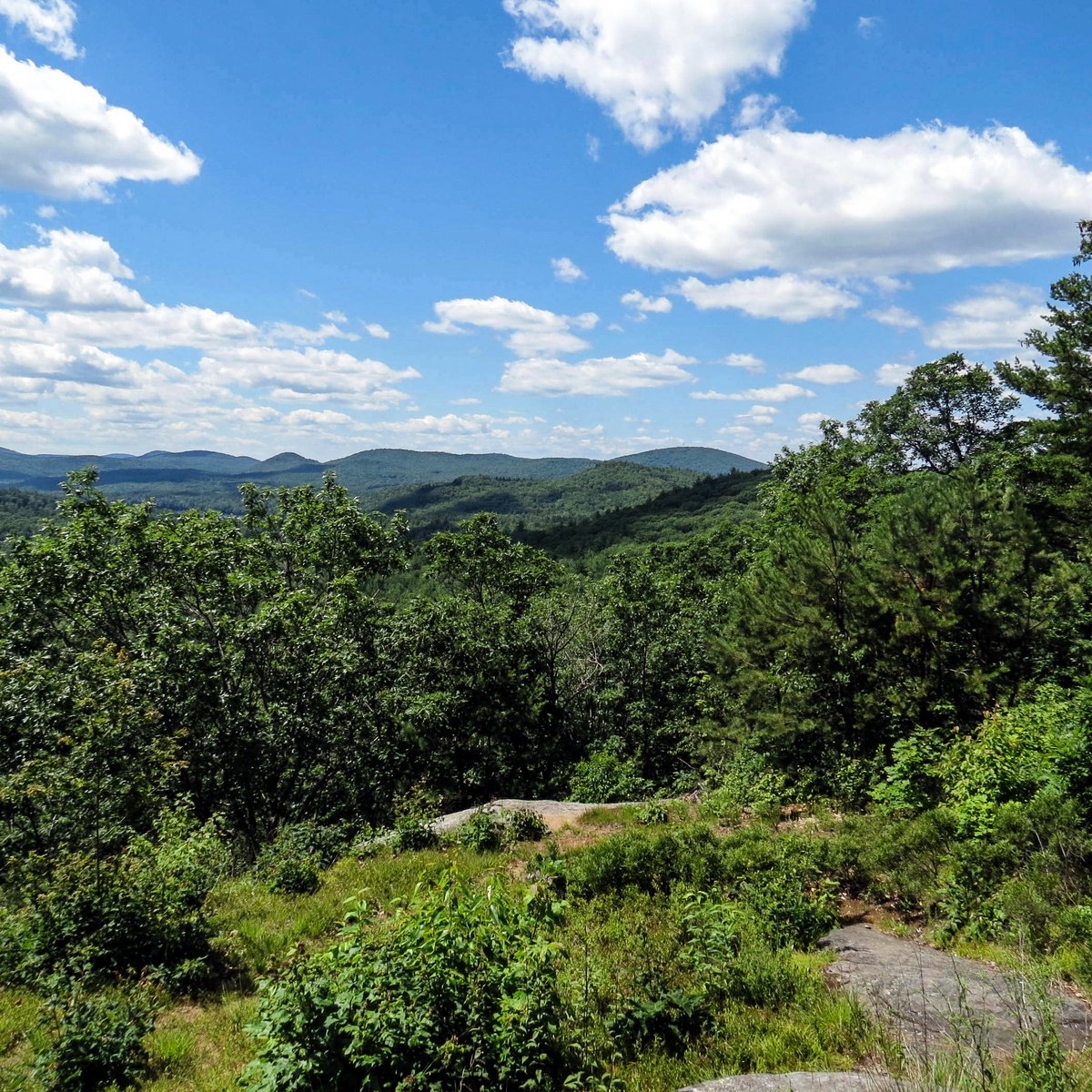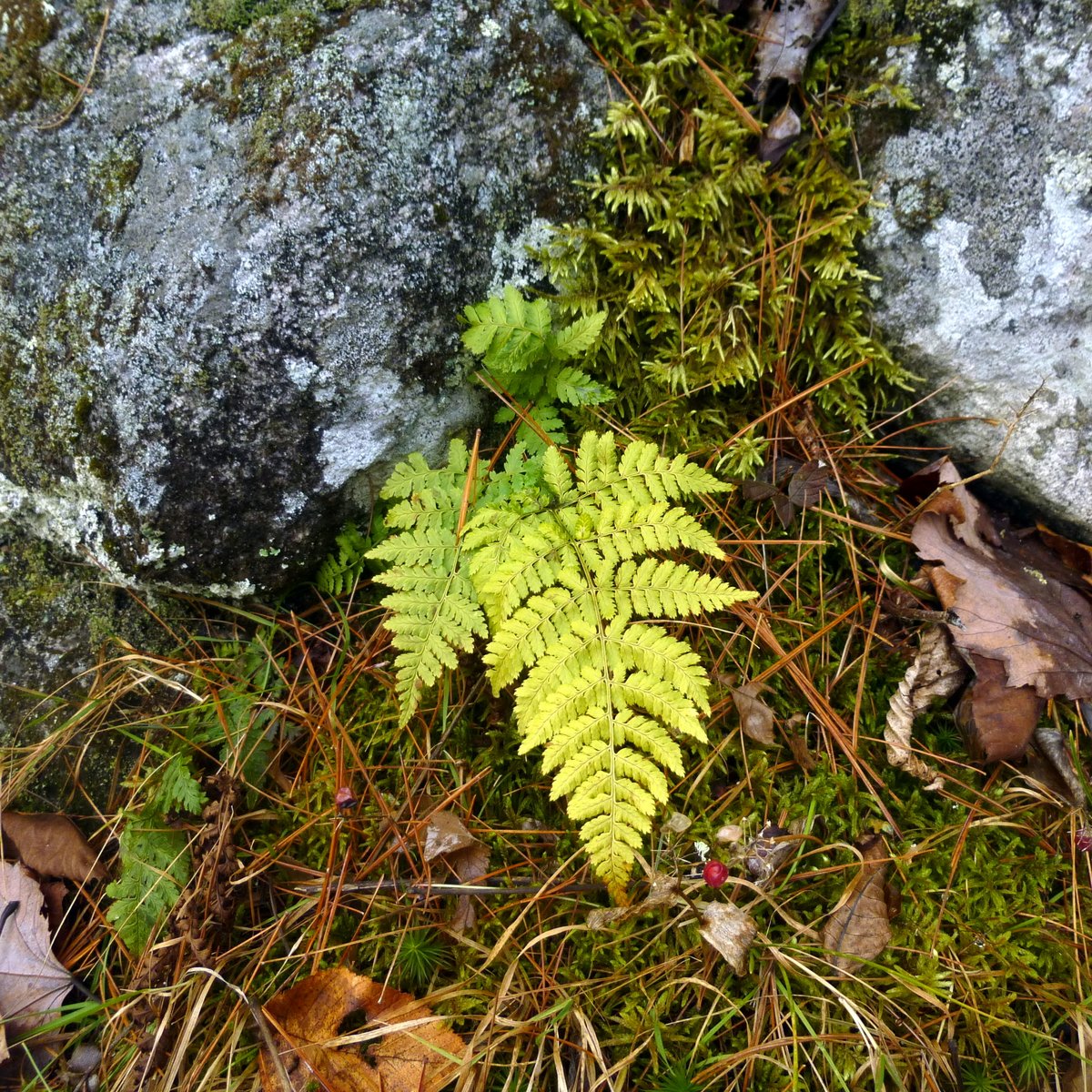I’ve left lichens alone up to this point this year because of the drought. Lichens, to be at their best photogenically at least, need rain and when they don’t get it they can change their appearance sometimes quite dramatically. Some lichens however, like the common goldspeck lichens seen above, seem to change very little no matter what the weather.
Common goldspeck lichens are very pretty and grow on stone. These examples were growing on 200 year old slate headstones in a cemetery, which is a great place to find lichens.
Not surprisingly when you get close enough you find that common goldspeck lichens look like tiny gold specks. This one happened to be producing spores and you can see that by the little round things that look like octopus suckers scattered here and there. They are the lichen’s apothecia and they are very rarely seen on this lichen. If you took a common pin and poked it through a piece of paper and then looked through the hole you’d have a fairly good idea of the size of most of those little specks.
Another rock loving lichen is the sidewalk firedot lichen (Caloplaca feracissima,) so called because it is a lime lover and grows on concrete sidewalks, which have lime in them. When you see it in a stone wall it’s a fair bet that the stone it grows on has limestone in it too. This stone is almost completely covered by it.
A closer look at the sidewalk firedot lichen showed how it is another lichen made up of tiny specks, some of which are its dry fruiting bodies (apothecia).
I wanted this post to be about showing you how lichens can change their appearance, and one that illustrates this well is the star rosette lichen (Physcia stellaris). This is how it might appear when it is very dry, with apothecia that appear very gray. The apothecia of this lichen are actually dark brown but they have a powdery wax coating that can cause their color to change depending on the light. Plant parts with this powdery waxy coating are said to be pruinose and a good example of it is the “bloom” on blueberries, grapes, plums, and other fruit. The coating reflects light and protects what it coats from the sun. Depending on the angle of the light these apothecia can appear blue, gray, brown or black. That’s why it pays to visit lichens several times.
Here, in a photo taken previously, the star rosette lichen’s apothecia appear blue-gray and that could be either because of the light or the fact that it had rained recently when this photo was taken.
The only thing that seems to change about this lichen is the amount of apothecia it has. On this very dry day it still had so many you could barely see its body (thallus). I believe it is a Powdery sunburst (Xanthomendoza ulophyllodes) lichen, which is very pretty. Unfortunately it is also relatively rare in this area. I’ve only found it on two or three trees in one location. This one is about 3/4 of an inch across.
Here is the same powdery sunburst lichen that appeared in the previous photo, but this is what it looked like three years ago. It clearly illustrates why, if you’re going to study lichens, you need to visit them several times over a period of time if you would know them well.
Pink earth lichen (Dibaeis baeomyces) is one that I have seen no changes in whatsoever after several years, This pretty little lichen closely resembles bubblegum lichen (Icmadophila ericetorum.) One of the differences between the two is the length of the stalks that the plump pink apothecia sit on. They are longer on bubblegum lichens than they are on pink earth lichens. Both are beautiful things that are rarely seen in this area. The whitish thallus, or body of the lichen, grows on soil; usually on dry acidic soil near blueberry and sweet fern plants. It can sometimes have a bluish cast as well.
Scattered rock posy lichen (Rhizoplaca subdiscrepans) is both beautiful and unusual with its brain like body and orange fruiting bodies. This lichen’s orange apothecia can disappear when it is dry so I was surprised to find them this time. This one was growing on stone in full sun. This lichen is fairly common and I find it both on mountain summits and in the lowlands.
The golden moonglow lichens (Dimelaena oreina) that I see are usually about an inch across but they can get much bigger. The ones I know grow in full sun on granite and don’t seem to change color when they dry out like many other lichens do. This one was producing spores and that’s something I don’t see this lichen do very often. This was an odd example because it had another foliose lichen growing in its center. If you spend much time in cemeteries you have probably seen this pretty lichen, because it seems to like growing on smooth, polished stone, especially granite. It is a crustose lichen and crustose lichens are very determined, so removing it from a gravestone would be a challenge. When lichens grow on glass the acids in them can actually etch the glass and this is a problem in the big European cathedrals, especially. I would think the same would be true for polished stone.
Rosy saucer lichens (Ochrolechia trochophore)seem toprefer growing on smooth barked trees but some like this one don’t seem to care and will form themselves to whatever shape the bark they grow on happens to have. I probably see more of this pretty little lichen than any other. It’s apothecia are not subject to cold or dryness, apparently; they are visible in winter or summer.
Peppered rock shield lichen (Xanthoparmelia conspersa) likes to grow on stone in full sun and I find a lot of them on stone walls. They’re a good introduction to lichen study because their brown apothecia, where their spores are produced, are large and easy to see without aid. Lichens are made up of a symbiotic relationship between fungi and algae or cyanobacteria. Technically apothecia are “fungal reproductive structures, in which the fungus reproduces itself through the production of spores” This is not the only way that lichens reproduce, but it is common and the apothecia are often beautiful and well worth watching for.
Here is a closer look at those apothecia. Note the different shades and shapes, all on the same lichen. They wrinkle up a bit when dry.
Dog or pelt lichens will grow on soil, rotting wood, or stone as this one was. The example pictured is I believe, the scaly pelt lichen (Peltigera praetextata), and I arrived at that identification only with the help of a lichen expert. These lichens are associated with mossy areas because the mosses provide the moisture that they need. Since there are about 100 species of foliose lichens in the family Peltigeraceae they can be tough to pin down. It is a foliose lichen because it is lobed, or leaf like. The upper part of the body (Thallus) is undulating or veined in this case. This lichen is large and easy to see. It is also probably quite old.
What sounds most plausible to me about the origin of the name “dog lichen” are the white “roots” on the white underside of the lichen body. They are fang like and called rhizines. On some lichens they can be quite bushy, and on others they are narrow and thin. They are one of the identifying characteristics of dog or pelt lichens, so you should always try to get a look at them if you can. Often the edges of the lobes will curl up, revealing them. In this area these are relatively rare. I’ve seen them only in two places.
It originally took me quite a while to figure out what this lichen might be called but its green body (thallus) with flattened strap like branches and white fruiting bodies (apothecia) led me to finally settle on the tufted ramalina lichen. Then my lichen expert friend told me that it is now known as Ramalina americana. A lichen guide from 1902 says this lichen is “very common in New England” but I had never seen it. My knowledgeable friend tells me that is because it was nearly wiped out by pollution, and that tells me that our air here in New Hampshire must be very clean. If you see lots of lichens where you live it’s probably fair to assume the same.
Here is a closer look at the Ramalina lichen’s apothecia. They’re very different from most lichens I see.
Leafy (foliose) lichens that look like this can be difficult to identify but I believe this one is the fringed wrinkle lichen (Tuckermanopsis americana). They are one of the easiest to find because they fall from the trees and litter the ground on virtually any trail you follow in this area. They can be difficult to identify because they change color so readily. I’ve seen them even look pure white when very dry. This one was found on a rainy day so I know its colors are true. The brown, roundish bits with dots (pycnidia) around the edges are its apothecia, and they can be very pretty. This could also be the variable wrinkle lichen (Tuckermanopsis orbata), which is a good name for a very pretty but variable lichen.
A lichen common to stone walls is the sulfur dust lichen (Chrysothrix chlorina.) It’s very yellow and hides under overhangs so it doesn’t get rained on. At least I think that’s why I always find it tucked away like this, but this is odd behavior for a lichen because they usually like a lot of rain and sunshine. It seems as if this one would rather have water run down the stone to it than have raindrops land directly on it. Sulfur dust lichens are kind of granular in texture. If you’re lucky you can sometimes find them with fruiting bodies (apothecia) but more often than not I see them when they aren’t producing spores.
NOTE: My lichenologist friend has pointed out that the correct scientific name for this lichen should be Psilolechia lucida, which is also called sulfur dust lichen. Apparently Chrysothrix chlorina is quite rare in this area.
Some lichens, like the script lichen show above, seem to only produce spores when the weather is cold. Though there are apothecia on this lichen you can barely see them; in the summer you can look at trees that are covered with script lichens and see nothing but grayish white spots on the bark.
But in the winter script lichens come to life and will be covered with squiggly “script” which can often be very beautiful. This is why one of my favorite times to go lichen hunting is in the fall and winter months. Lichen study is not a sprint, it’s a marathon that can sometimes take years to run if you want the medal. Once you become interested in lichens, you’ll find interest and pleasure on every rock, tree and fencepost you see for many years to come.
Smokey eye boulder lichens (Porpidia albocaerulescens) are one of the most beautiful lichens of all in my opinion, but their beauty is fleeting and it depends on how the light happens to fall on them. If you find one it might not look like this one at all. The pretty golden brown body (thallus) of the lichen is peppered with blue apothecia which are colored by the light due to their waxy coating. Take a look at the next photo to see what a simple change in light can do.
This is the exact same lichen we saw in the previous photo; all that is different is the light, and that’s why if you’re at all interested in lichens you really should visit them at different times of year and in different weather. The previous photo was taken when sunlight was falling on it, and this shot was taken when the lichen was in shade. Not only light but dryness can affect the color of many lichens, so make a note of where you find them and then go back when the weather has changed. I think you’ll be amazed by how much they can change, and also by how beautiful they can be.
Here is a lichen that was a learning experience for both myself and my friend the lichen specialist, who just happens to be writing a book about lichens much like the one you see above. There are many things on this lichen that lead to its identity but what I want you to see are its apothecia, which grow in concentric circles and look like little bumps or hills. That would tell most people that this was a concentric boulder lichen but they’d be fooled, just as I was. This photo was taken just after a rain and this lichen was very wet.
Here is the lichen once it had dried. As you can see it has changed dramatically; those little bumps have become cup shaped, and that’s because when wet they swell up and close, and then open again when they dry out. This was a challenge to even a lichen expert so you shouldn’t feel disappointed if you can’t identify every lichen that you see. Some like this one are hard to identify without expert help. Its name is the dusky map lichen (Rhizocarpon reductum) and it will appear in my friend’s lichen book.
If you find yourself interested in lichens maybe you could start like I did; find a particular lichen and simply watch it; maybe on that tree in your yard, or on your daily walk, or at lunch time. They grow virtually everywhere and are not hard to find. So watch “your” lichen and see how it changes. See how different it appears in sun and shade, and when wet or dry. Think about how all of these changes have been going on right there in plain sight all this time without your knowing. This will make you a better student of nature; a better observer. Ask yourself well, if I have missed this, something so obvious, what else might I have missed? Then you will be amazed at what you begin to see.
It is those insignificant things, the things most of us pay no attention to like lichens, liverworts or mosses, that often tell the most about that part of the planet we live on. Lichens, or lack of them, speak about clean air or air pollution. Liverworts speak about clean water or water pollution and mosses speak about soil conditions. These creatures are like canaries in a coal mine and will give advanced warning of any abrupt changes in climate or increases in pollution. All of things on this earth have voices. Nature speaks, but only to those willing to listen, and you listen by simply being there.
We do not see nature with our eyes, but with our understanding and our hearts. ~William Hazlett
Thanks for stopping in.
































































































































































